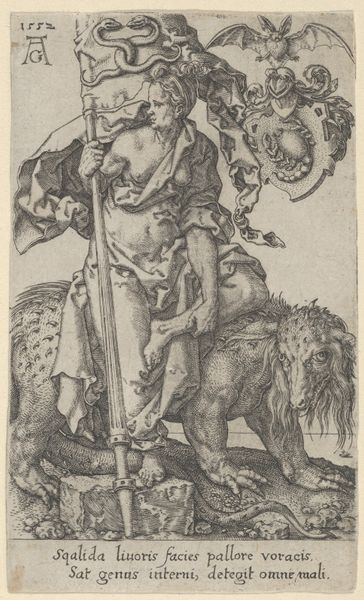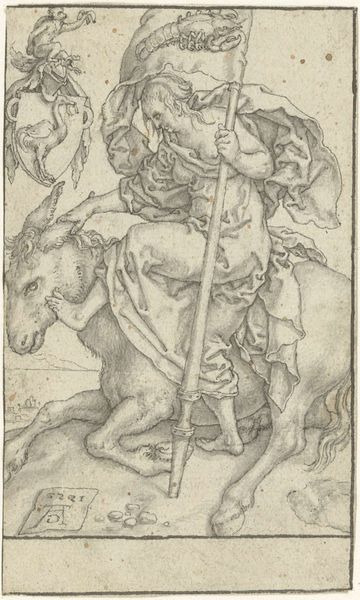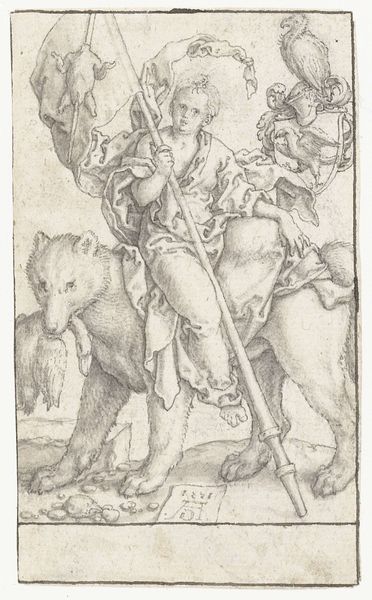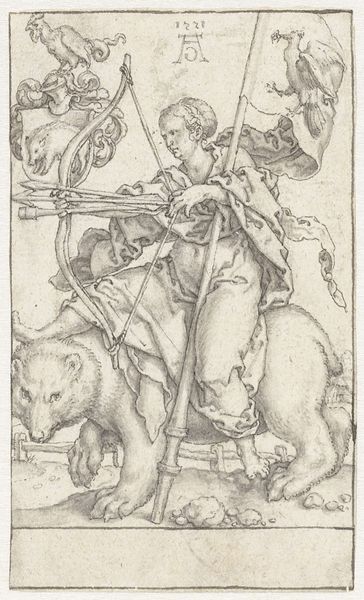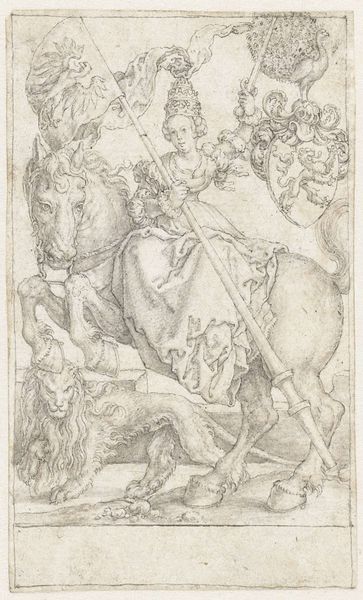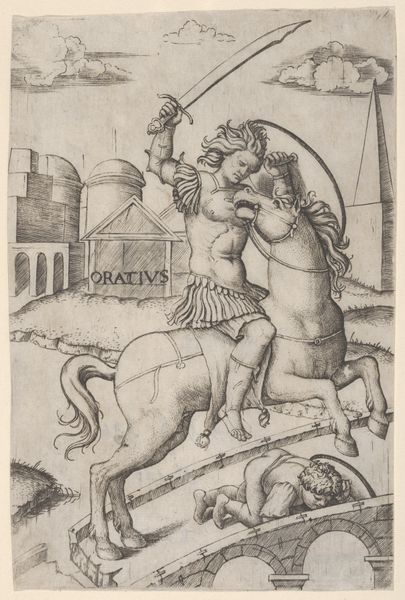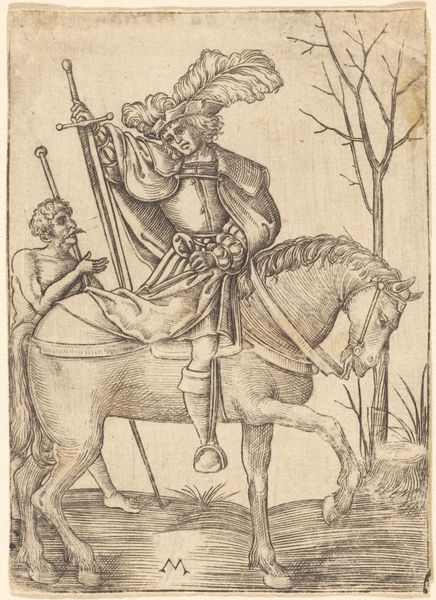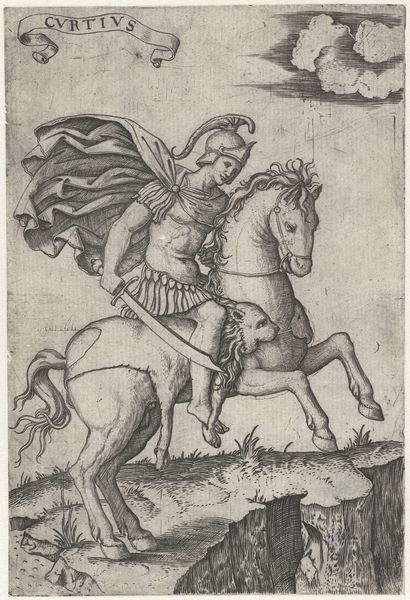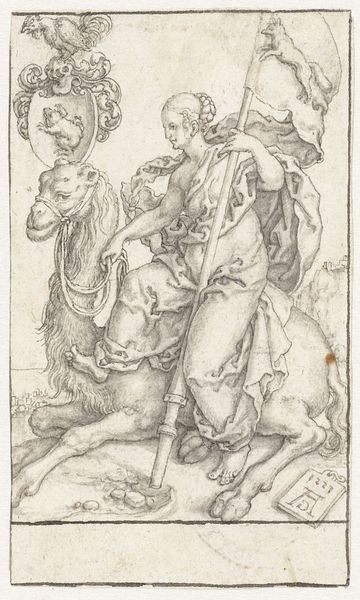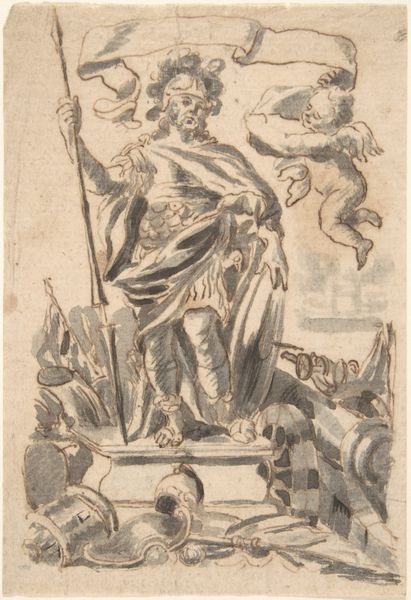
drawing, print, engraving
#
drawing
#
allegory
# print
#
pencil sketch
#
figuration
#
line
#
northern-renaissance
#
engraving
#
sword
Dimensions: Sheet: 4 1/4 × 3 1/8 in. (10.8 × 7.9 cm)
Copyright: Public Domain
Curator: This engraving, titled "Justice," was created by Albrecht Dürer around 1499. It's currently part of the collection at the Metropolitan Museum of Art. Editor: It's intense, isn't it? Immediately, I feel a sort of unsettling weight, visually. The figure is precariously balanced; it looks almost nightmarish, particularly her bizarre face. Curator: Dürer, known for his mastery of printmaking, likely used a burin to carve the image into a copper plate. Think of the precision, the controlled pressure needed to achieve those fine, dense lines. What’s especially fascinating here is that, although Dürer would have trained extensively, the materials available at the time would have their own limitations—and possibilities. Editor: I love the density you're talking about; it gives a texture that’s almost… tactile. The drapery folds look so heavy you could feel their weight. The lion, too – magnificent and unsettling with the weight of Justice pressing down upon him! What do we make of her expression though? The eyes staring in two different directions are so unsettling! Curator: Yes, those dual-gazing eyes definitely stand out! It adds another layer to the allegory. The figure of Justice bears a sword in one hand and scales in the other, emblems representing power and impartiality. She stands upon a lion which can be seen to symbolize the need for strength and bravery to enforce judgements and bring order, although the figure looks as though her decisions have come at some personal cost. The quality of paper also impacted the final print, so even the circulation and lifespan of "Justice" as an image would have been closely tied to the trade networks and available resources of the time. Editor: Cost is a good word for it; I wonder at what cost is Justice served when the deliverer of said justice looks so traumatised by her burden? Ultimately, despite its formal qualities and craftsmanship, I'm left wondering whether it's advocating order, or questioning what constitutes 'fair' justice. Curator: Dürer often engaged with complex ideas about morality and governance in his work. Considering those contextual layers certainly gives it added complexity and helps to think about what kind of ‘social order’ Dürer may have wanted the viewer to think about at that time. Editor: I find my understanding shifting as I reflect, thank you! I’m seeing so many shades of grey.
Comments
No comments
Be the first to comment and join the conversation on the ultimate creative platform.
